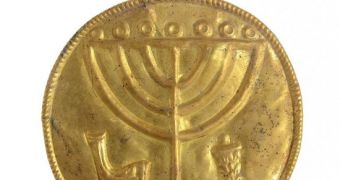On Monday, archaeologists carrying out excavations in Israel announced that they had unearthed a treasure estimated to be some 1,400 years old.
The treasure was discovered among the ruins of a house dating back to the Byzantine era, at a distance of about 50 meters (164 feet) from Temple Mount's southern wall, in Jerusalem.
It comprises of 36 gold coins and several pieces of gold and silver jewelry. The coins all display the visage of a Byzantine emperor, starting from Constantine II and ending with Mauricius.
All in all, the reign of the emperors featured on these coins stretches over a period of about 250 years.
Together with these artifacts, the archaeologists dug out an ancient Torah scroll and a ritual instrument dubbed a shofar. The latter is made from a ram's horn, International Science Times details.
By the looks of it, not many Torah scroll dating to this period have thus far been discovered, hence the fact that archaeologists were quick to label it a rather unique find.
What's more, the researchers found a gold medallion whose diameter measures about 10 centimeters (almost 4 inches).
The medallion is emblazoned with a seven-armed candelabrum known as a menorah, and other Jewish iconography.
Speaking at a press conference, Professor Eilat Mazar admitted that, although he had been excavating various sites for quite some time, he had never come across such a treasure before.
“I have never found so much gold in my life! I was frozen. It was unexpected” the researcher stated.
The archaeologists suspect that the artifacts were brought to the region by Jews who came to these lands in the aftermath of the Persian conquest of the Byzantines, Times of Israel tells us.
They say that, all things considered, the treasure was probably a communal one. Thus, it is likely that the Jews intended to use the money and the jewelry to better survive times of hardship.
Check out the video below to learn more about this treasure and its discovery.

 14 DAY TRIAL //
14 DAY TRIAL // 